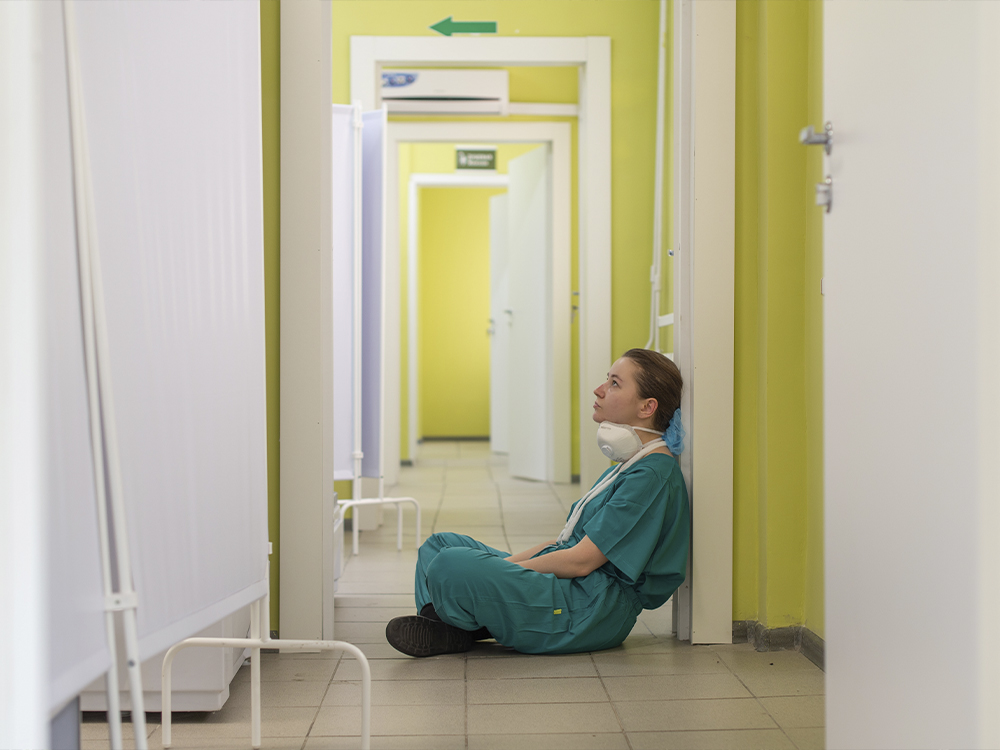Timely Topic: Professors Address Impacts of Pandemic on Workplace, Health Care, Real Estate
04.05.2021

Working from Home, Beyond the Pandemic
As COVID-19 vaccines become more widely available, organizations are planning for the return to the physical workplace. More than half of U.S. employees currently working from home say they’d like to keep their remote arrangements beyond the pandemic, according to a Pew Research Center survey.
But most Americans won’t have a choice. While almost two-thirds of workers holding a bachelor’s degree or higher said their work can be done remotely, only 23% of those without degrees have the opportunity to work from home.
Dr. L. Douglas Kiel, a professor of public affairs in the School of Economic, Political and Policy Sciences at The University of Texas at Dallas, said one of the positive things to come out of the pandemic is that people are going to have more options in terms of how they work.
“This is going to have real impacts cascading throughout the economy,” Kiel said.
“There is already a growing body of literature that suggests a lot of businesses are thinking about reducing the amount of space they actually have available for employees. Why should they be spending money on commercial real estate when many employees could be working from home?” he said. “There’s also a potential loss of business travel. Why not just Zoom instead of paying for transportation costs?”
Many lessons have been learned about remote work in the past months, including best practices for productivity and team work, psychological needs for workers and how anxiety levels fluctuate among employees, effective supervision strategies, and suggestions for team cohesion, Kiel said. Remote workers have reported wanting more communication and more face time with their teams. Many face challenges unplugging from work or report feeling lonely.
For those who do return to the office, Kiel said to expect hybrid schedules and assigned workspaces. Shared spaces like conference rooms will be in use, with social distancing protocols, but gathering at the coffee pot or water cooler will likely stop for now. Managers will need to be attentive to the importance of relationships at work and ensure connections are maintained, such as continuing group lunches but with smaller-sized groups.

Health Care Organizations Continue To Deal with Impacts
As schools and businesses return to pre-pandemic activity, health care organizations are left with lingering challenges.
Experts suggest that as COVID-19 cases continue, health care workers will face physical, emotional, cognitive and behavioral issues.
Organizational trauma or organizational post-traumatic stress disorder (PTSD) will become the greatest challenge for health care leaders, said Britt Berrett PhD’09, clinical professor of organizations, strategy and international management and director of the Center for Healthcare Leadership and Management in the Naveen Jindal School of Management.
“Organizational trauma is being suffered by health care organizations,” Berrett said. “Symptoms include exhaustion, loss of productivity, difficulty in experiencing positive emotions and emotional numbness. Health care professionals will need to navigate forward with courage and purpose.”
Organizational PTSD can vary in intensity over time, Berrett said. Health care leaders could experience breakdowns in communication, erosion of trust and even individual hopelessness, which can all negatively impact the delivery of care.
Berrett also noted public health professionals are taking a much more active role in health care planning, which may affect access, cost and quality of care.
Some obvious challenges moving forward will be addressing cross-contamination in waiting areas, remote communication and monitoring, and exposure tracking. Health care facilities may need to be reconstructed in response to ventilation and proximity threats.
Berrett said health care reform also will require a more sophisticated approach to staffing and provider placement.
“Health care leaders will be reconfiguring health care delivery systems, addressing staffing shortages, imagining new and innovative communication systems, and modeling future health care crises,” Berrett said. “We will be experiencing a complete overhaul of a system that has continued to reform and innovate.”

Commercial, Residential Real Estate To Face Long-Term Impacts
Dr. Randall Guttery, clinical professor of finance and managerial economics and director of the Herbert D. Weitzman Institute for Real Estate in the Jindal School, said working from home is predicted to affect commercial real estate, particularly office space.
“On the one hand, there will be less demand for office space as some workers stay home permanently or part of the time,” he said. “On the other hand, however, in order to bring back workers safely, social distancing is going to require more square feet of office space per employee. So, it’s an interesting question: What will the net effect be?”
Residential real estate demand is exploding a year after the start of the pandemic in the U.S., Guttery said.
“Many are moving from the urban setting to the suburbs, especially as children return to the classroom,” he said. “Historically low interest rates are driving housing demand, too. Moreover, millennials are the largest generation of homebuyers, and they need more space as their families grow.”
–Brittany Magelssen
Note to journalists: These professors are available for news media interviews. Contact Brittany Magelssen, 972-883-4357, brittany.hoover@utdallas.edu.